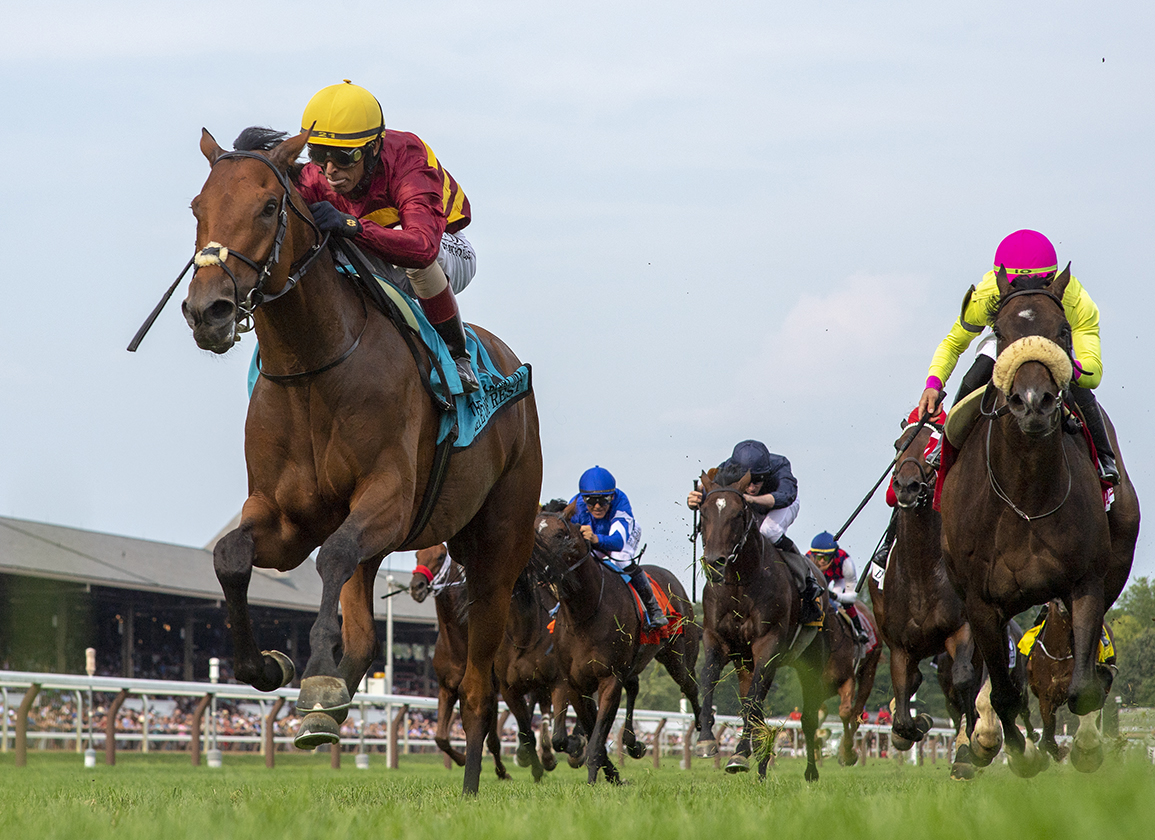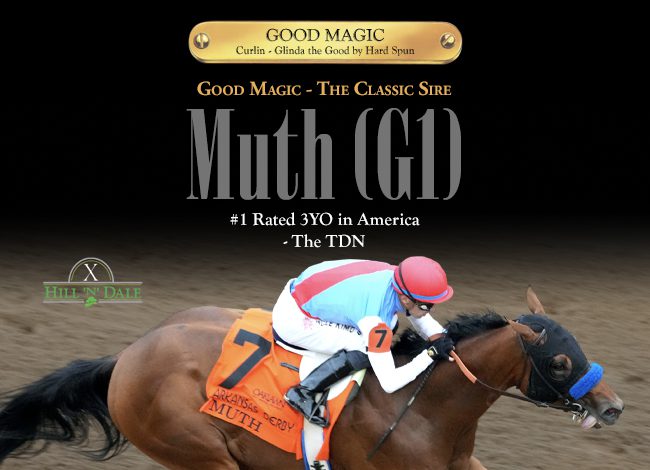By Margaux Herinckx
In Global Views, Godolphin Flying Start trainees provide insight into practices experienced and observations taken on their worldwide travels. First-year trainee Margaux Herinckx discusses the challenges of growing American turf racing.
As many in the American Thoroughbred industry will be quick to tell you, the most coveted prize of all for owners, breeders and trainers alike remains the GI Kentucky Derby, run on a surface synonymous with the U.S. racing scene: dirt. Since its inception in 1875, winners of the Derby–think Seattle Slew, Secretariat, Unbridled and Sunday Silence to name a few–have gone on to leave an indelible mark on the legacy of U.S. racing and breeding, and it is this dream of winning the greatest dirt race in the world that is woven into the fabric of the American industry.
However, over the last few decades, the prominence and popularity of turf racing has enjoyed significant upturns. With purse money increasing and an expanding programme of turf races across the country, many in the industry are keen to avail themselves of the opportunity to run their horses on the sod and reap the resultant ever-growing financial rewards. At Kentucky Downs, an undulating turf-only course that most readily imitates quintessential European racing, the purse money in 2021 was increased by 8% for non-stakes races, with maiden special weights boasting purses up to $135,000.
Initiatives such as the $1-million GI Pegasus World Cup Turf Invitational S., held in January at Gulfstream Park, have also helped to push this process along, whilst the introduction of a lucrative Turf Triple Series for 3-year-olds by the New York Racing Association in 2019 was reflective of the significant appetite for an advancement of turf racing at the time. Designed to mirror the traditional dirt Classic series, the programme incorporates the $1-million GI Belmont Derby Invitational, the $1-million GI Saratoga Derby, and the $1-million Jockey Club Derby, with winners of the former including subsequent GI Travers S. victor Catholic Boy (More Than Ready) and multiple Grade I winner Oscar Performance (Kitten's Joy). NYRA has also instigated a Turf Triple Series for fillies, incorporating the GI Belmont Oaks, the GIII Saratoga Oaks and the Jockey Club S., each worth $700,000, in 2022.
As a result, the demand for turf horses has continued to grow, and nowhere has this been more evident than in the booming European export markets. These days, promising maiden winners or stakes performers at premier tracks in Ireland or the U.K. are regularly purchased to race Stateside or farther afield. Furthermore, the growing presence of high-profile American ownership in Europe, notably that of Peter Brant, whose famous green-on-green silks were carried to victory by Sottsass (Fr) (Siyouni {Fr}) in the 2020 G1 Prix de l'Arc de Triomphe, is indicative of the desire to compete at a level of turf racing that is simply not available across the Atlantic. Similarly, the willingness of trainers like Wesley Ward to send their fastest turf horses to Europe tells the same story, his easily recognisable black and yellow chevroned blinkers now a frequent sight at the Royal Ascot meeting.
And yet, replicating this enthusiasm for turf in the breeding and domestic trading markets has proved a much more difficult task. Elite grass horses are yet to make the transition into the U.S. stallion ranks, a recent example being Juddmonte Farm's Flintshire (GB), a five-time Group/Grade 1 winner and the Eclipse Champion Grass Horse of 2016. Retired to Hill 'n' Dale in 2017, his first crop of yearlings were given a lukewarm reception at the American sales, averaging $35,000 at Keeneland September, and in 2020 he covered just 38 mares. He has since been relocated to Haras de Montaigu in France. Similarly, Noble Mission (GB), the regally bred brother of European superstar Frankel (GB), spent just five seasons at Lane's End Farm before his transfer to Shizunai Stallion Station in Japan this year. Even the most successful of U.S. turf sires, such as Kitten's Joy and the late English Channel, have struggled to overcome the challenges of a dirt-centric commercial industry.
Attempts have been made to address this, with targeted events such as the inaugural Turf Showcase Sale, piloted by Fasig-Tipton in 2017, which aimed to produce a boutique collection of high-class turf pedigrees and demonstrate that breeding for turf could prove profitable. Nevertheless, with a clearance rate of just 50% at that event, it was discontinued after just one year. It is obvious that proponents of turf breeding in America continue to fight an uphill battle. This ongoing lack of demand in the sales ring means that the purchase of grass horses has largely fallen into the remit of foreign buyers and those looking to source a bargain. Until that changes, it is hard to imagine stallion farms and commercial breeders pushing to promote turf horses with so little chance of return on investment.
And so, despite the progress of turf racing in the U.S., it so far remains stuck in a cycle that appears difficult to break. Perhaps it is still the prestige that is missing from the current equation, the truth being that racing on grass has simply not managed to capture the imagination of the American public the way dirt racing has. A topic regularly discussed amongst industry professionals, it is clear that the general consensus is for change, and yet there remains uncertainty as to how best to proceed.
Not a subscriber? Click here to sign up for the daily PDF or alerts.






